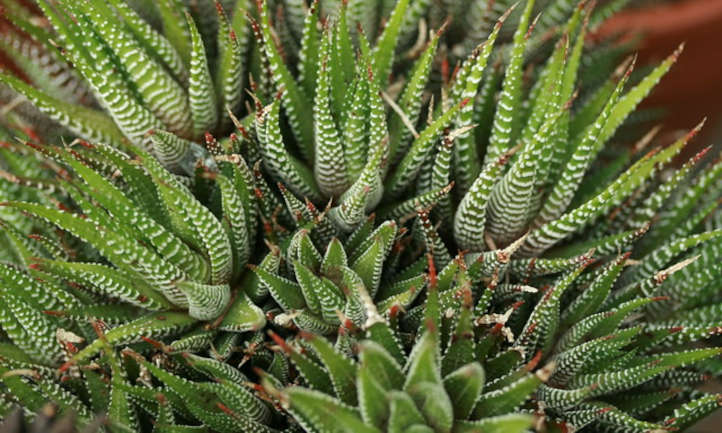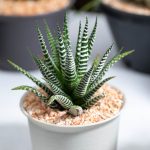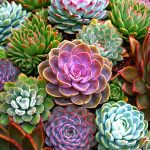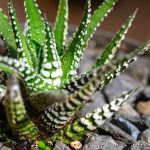Unveiling the essence of the little zebra plant, a distant cousin of the zebra plant, known as Haworthiopsis fasciata. Empower your gardening skills with our carefully curated care pointers!
Discover a fascinating fact – true zebras are black with white stripes, mirroring their plant look-alike, Haworthiopsis fasciata. Affectionately called the ‘little zebra,’ this succulent flaunts captivating white stripes and a distinct shape that adds a touch of individuality to any botanical collection.
This zebra plant, belonging to the Aloe Vera family, features green triangular leaves forming a charming bush. Resembling a typical succulent, the little zebra stores water and nutrients in its leaves, enabling it to endure prolonged droughts even outside its native land in Eastern Cape Province, South Africa.
For novice succulent enthusiasts, Haworthiopsis fasciata is an ideal plant. Its maintenance aligns with typical succulent care routines, preparing you for more challenging botanical varieties, while being non-toxic. Delve into this article for all the essential insights to include the little zebra plant in your gardening repertoire!
Amazing Products At Amazon For Cultivating Haworthiopsis Fasciata:
- Safer Brand Insect Killing Soap
- All Seasons Horticultural And Dormant Spray Oil
Quick Care Guide

A Comprehensive Look at Haworthiopsis Fasciata

Continuous botanical research often leads to the reclassification of plant species. Haworthiopsis fasciata, previously known as Haworthia fasciata, underwent such taxonomic shifts. Along with it, Haworthiopsis attenuata, closely resembling the little zebra, also transitioned from the Haworthia genus to Haworthiopsis.
Haworthia zebra, or Haworthia attenuata, closely resembles the little zebra plant with its striped dark green leaves and similar growth patterns. However, distinguishing features include the little zebra’s smooth inner leaves compared to the more textured Haworthia zebra.
While the little zebra plant is a rarity in cultivation and often mislabeled, confusion with Haworthia zebra may arise. In such cases, our guide on Haworthiopsis attenuata (Haworthia attenuata) can offer clarity, as both these succulents benefit from similar care routines.
The pointed leaves of the little zebra plant adorned with bumpy “zebra stripes” or white tubercles grow elegantly in succulent fashion, typically not exceeding 7 inches in height. It thrives as an indoor ornament, gracing windowsills. During blossoming, it boasts slender stems crowned with tubular white flowers.
Haworthiopsis fasciata zebra plants propagate in clusters, with new offsets developing beneath the parent plant, eventually establishing independent root systems. Although slow-growing, these succulent offspring simplify the propagation process.
When cultivated outdoors as annuals, Haworthiopsis fasciata succulents exhibit steady growth from spring to fall, with dormancy likely in winter. As temperatures rise again, summer or fall sees the plant bursting into blooms. This period also proves beneficial for transplanting, pruning, or propagation, coinciding with active growth phases.
Native to South Africa, Haworthiopsis fasciata thrives in hot, arid conditions. While it thrives outdoors in zones 10-11 in the US, colder regions necessitate indoor cultivation (yes, even in zone 3!).
Optimal Zebra Plant Care

By setting the right growing environment for your zebra haworthia, you pave the way for its flourishing. Here’s what you need for effective zebra succulent plant care.
Sunlight and Temperature Requirements
Similar to most succulents, Haworthiopsis fasciata thrives in bright, indirect sunlight. It prospers in south-facing windows receiving a minimum of 6 hours of daily direct light. This optimal sunlight exposure ensures the vibrant growth of your little zebra.
In the scorching afternoon heat, plants benefit from a touch of light shade. When subjected to intense, direct sunlight, their leaves might undergo a stunning color transformation, hinting at stress without actually harming the plant. Surprisingly, many gardeners purposely overexpose their succulents to sunlight to enhance their vibrant hues.
Zebra cacti, as desert dwellers, are not tolerant of cold temperatures. They can withstand around 30°F, but frost damage can occur at 45°F. Conversely, Haworthiopsis fasciata succulents thrive in heat but require some shield from direct sun when temperatures exceed 85°F.
Embracing the “soak and dry” watering technique for succulents involves saturating the potting soil thoroughly and allowing it to dry out completely before repeating the cycle, typically every 2-4 weeks based on the climate. When unsure if your succulent needs water, it’s best to err on the side of caution and refrain from watering.
Maintaining low humidity is crucial for zebra plants, as excessive moisture can trigger leaf rot and fungal growth. Adequate air circulation and minimizing humidity levels are recommended to keep your succulent healthy.
Zebra plants thrive in well-draining soil mixes due to their natural habitat in sandy, acidic conditions. Utilizing a premade succulent and cactus mix or customizing your mix with sand, perlite, or vermiculite enhances drainage, ensuring water seeps through swiftly without pooling on the surface.
To promote Haworthiopsis fasciata’s growth, feed it with a balanced liquid fertilizer every 2-3 months during summer, while withholding feeding during winter when its growth naturally slows down.
When it comes to troubleshooting zebra plants, ensuring adequate sunlight to prevent etiolation and addressing browning/crispiness by adjusting watering frequency and providing shade in intense heat are primary solutions. Overwatering should be avoided to prevent root and stem rot, with immediate action required if symptoms arise.
Combat mealybugs and spider mites, two common pests that afflict succulents, using insecticidal soap, mycoinsecticide, or predatory insects like ladybugs or lacewings. Keeping leaves and soil debris-free can help prevent infestations and maintain the health of your zebra plants.
Ensure proper maintenance of your succulents by eliminating dead plant matter regularly.
Diseases
Excessive moisture in the soil can lead to root rot in succulents with fleshy roots. This condition, usually caused by overwatering, makes roots susceptible to various soil-borne threats like mold, oomycetes, and fungi such as Fusarium, Pythium, or Phytophthora. To prevent root rot, maintain proper drainage and avoid waterlogging the soil.
To combat such diseases, consider using fungicides or removing affected portions of the plant. Transplant any salvaged parts into well-drained soil and monitor them closely for signs of recurring issues. Always dispose of diseased plant material properly and avoid composting it.
Frequently Asked Questions

Q: How do you take care of Haworthia fasciata?
A: The zebra haworthia requires minimal intervention. Water it sparingly, place it in semi-direct sunlight, and shield it from chilly drafts as it lacks cold tolerance.
Q: How long do Haworthia fasciata live?
A: Due to their slow growth, zebra haworthias can thrive for up to 50 years.
Q: How big can a Haworthia fasciata get?
A: Typically, a zebra plant doesn’t exceed 7 inches in height.
Q: Does Haworthia fasciata need sunlight?
A: Indeed! Provide your zebra cactus with at least 6 hours of indirect sunlight daily, preventing leaf burn by offering light shade during hot spells.
Q: Is Haworthia hard to take care of?
A: Zebra haworthia demands minimal upkeep. By providing suitable potting mix, ample natural light, and sparse watering, you can easily maintain its well-being.
Q: How often should you water Haworthia?
A: Regardless of indoor or outdoor cultivation, water H. fasciata only when the soil is completely dry, typically every 2-4 weeks.
Q: Does a Haworthia flower?
A: Yes, but modestly. Most haworthias produce slender stems with white tubular flowers, typically blooming from early summer to fall.
Q: Is Zebra succulent rare?
A: Indeed, the H. fasciata zebra succulent is considered rare, especially outside its native South Africa, where plants labeled as fasciatas are often Haworthiopsis attenuata.
Q: Are Haworthia toxic to dogs?
A: No, zebra fasciata plants pose no toxicity risk to most animals, ensuring the safety of your pets and children around this stunning species.






